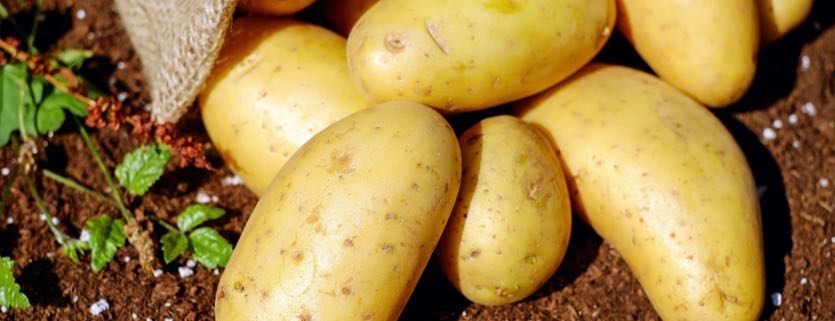4 Surprising Sources of Nutrients Your Body Needs
If your diet is perfect, you can stop reading right now. This story is for people who occasionally hang out with foods best described as bad nutritional influences. That’s because even dietary troublemakers have redeeming qualities and you can find surprising sources of nutrients everywhere.
That doesn’t mean your whole diet should—or even can—be filled with foods that lean so heavily into the unhealthy. You need to limit the foods mentioned below. And for good health and weight maintenance, fill up on nutritious whole foods and plenty of plants.
But for the sake of your happiness or sanity, sometimes you need to stray—even momentarily. So, the following list of surprising sources of nutrients isn’t meant to absolve your dietary indiscretions. Instead, use it to help you pick a pleasure with at least a sliver of a nutritional silver lining.
Dark Chocolate Could be Your Choice for Unexpected Nutrition
This is probably the most well-known example of important nutrients in a delicious disguise. But let’s get something straight—this isn’t a blanket statement about all chocolate. Only the dark variety (cocoa—the unsweetened powder, not the drink—content at 50 percent or above) brings the hidden nutrient payload.
White chocolate is basically sugar and fat—without any actual cocoa in it. Milk chocolate is ubiquitous, creamy, delicious, and lacking many cocoa solids, which almost eliminates any nutritional upside whatsoever.
Dark chocolate contains more of the actual source material—the pods of the cacoa plant—which makes it more bitter and nutritious. That’s because this dark delight retains some soluble fiber, beneficial fatty acids, minerals, and small amounts of caffeine.
The phytonutrients in dark chocolate are also a big part of the surprising nutritional profile. Chocolate’s bio-active plant compounds have the ability to provide antioxidant support. And cocoa’s profile of phytonutrients—in this case, flavonols, catechins, and polyphenols—compares favorably to some berries.
That doesn’t mean you should permanently replace your afternoon handful of blueberries with a bar of dark chocolate. Even though it’s a surprising source of nutrients, dark chocolate is an unsurprising source of calories and fat. Any nutrient density is unfortunately balanced with the density of calories. So, eat dark chocolate in moderation—an ounce (28 grams) here and there won’t hurt. And you now have the information to back up your decadent decision.
What Nutrients are Hiding in Dark Chocolate?
- Iron
- Copper
- Magnesium
- Zinc
- Phosphorus
- Manganese
- Potassium
- Selenium
- Flavonols
- Fiber
The Shocking Nutritional Power of Potatoes
These tubers get a bad reputation. But why do potatoes have to be so delicious when fried and salted? Without the unhealthy preparation, potatoes absolutely qualify as a surprising source of nutrients.
Potatoes are just plants, after all—starchy nightshades grown underground to be exact. That’s the same family as tomatoes, peppers, and eggplant. And potatoes share vitamin and mineral content with their conventionally healthy cousins.
The white or gold varieties of potato—sweet potatoes are different and often considered healthier anyway—have vitamin C, potassium, vitamin B6, and certain polyphenols. Since they’re mostly carbohydrates, potatoes also contain a small amount fiber. What is there mostly takes the form of resistant starch and insoluble fiber.
A majority of potatoes’ helpful nutrients aren’t hiding deep inside. They’re right on the surface, in the skin. So, when you cook potatoes, wash them thoroughly to remove dirt, but don’t peel them. You’re throwing a significant percentage of the nutrition in the garbage or compost.
There are plenty of nutrients to make potatoes worthwhile parts of your plate. And they are a staple food around the world. But overeating these starchy vegetables can be detrimental to weight management. That’s partly because plain potatoes are high glycemic and fairly calorie dense.
So, when potatoes are on the menu, make sure to pay attention to preparation (leave the peel) and cooking method (baked or boiled—not fried or cooked without excess fat). To lower the glycemic impact of potatoes, eat them as part of an entire meal (with protein, added fiber, and fats) to help slow the rate of digestion. And know when you dig in, you’re doing something surprisingly good for your health.
What Nutrients are Hiding in Potatoes?
- Insoluble fiber
- Resistant starch
- Potassium
- Magnesium
- Vitamin C
- Vitamin B6
- Vitamin B9 (folate)
- Choline
- Antioxidants from various polyphenols (including catechin and lutein)
Looking for a Surprising Source of Nutrients? Say Cheese!
Cheese can be gooey, melty, creamy, or delightfully funky. It’s also full of saturated fat, calories, and quite a bit of salt. That’s not all that awaits cheese lovers, though.
The delectable dairy treat sports a bevy of beneficial nutrients to help balance some of the negatives. It has protein, a variety of essential minerals (calcium, zinc, and phosphorous), and vitamins A, B2, and B12. Depending on the milk source, cheeses can even contain conjugated linoleic acid, vitamin K2, good bacteria, omega-3s, and other fatty acids.
And you have your choice of different cheeses. If you’ve visited any grocery store lately, you know the variety of cheeses is staggering. Each type of cheese offers a different level of healthfulness, too.
It’s time to slice up the nutritional goodness for a few common varieties of cheese:
- Cheddar: A popular addition to a variety of dishes—or simply delicious on top of crackers—this cheese, per ounce (28 grams), has: 115 calories, seven grams of protein, 20 percent of your recommended daily intake (RDI) of calcium, and some vitamin K2.
- Blue Cheese: A rich cheese with veins of mold that has about 100 calories per ounce, six grams of protein, and a third of your RDI of calcium.
- Feta: Crumbles of this salty cheese can give your salad a big boost of flavor, protein, and calcium without too many calories—80 per ounce, six grams of protein, and 10 percent of your daily calcium.
- Mozzarella: This lower fat, lower sodium cheese is also lower calorie—about 85 per ounce—but still has plenty of protein (six grams) and calcium (14 percent of your daily recommendation in just an ounce).
- Parmesan: A hard cheese that’s great as a topping contains about 110 calories per ounce, 10 grams of protein, 34 percent of your RDI of calcium, and about 30 percent of your recommended intake of phosphorous.
- Swiss: Don’t let the holes fool you, there’s still plenty of protein (eight grams), not a lot of sodium, and very few carb (less than a gram) in this popular cheese—which also has about 111 calories and a quarter of daily calcium intake in an ounce.
All the fat, calories, and sodium necessitates a moderate approach to cheese consumption. And it’s obviously a no-no for those avoiding dairy for any reason. But if cheese melts your willpower, don’t fear too much. It’s still a surprising source of nutrients you need.
What Nutrients are Hiding in Cheese?
- Protein
- Vitamin A
- Vitamin B2
- Vitamin B12
- Vitamin K
- Calcium
- Zinc
- Phosphorous
- Fatty acids—like palmitoleate, conjugated linoleic acid (CLA), and omega 3s
- Good bacteria
Crack Open the Cold, Hard Facts About Hidden Nutrients in Beer
Moderation is the best mode when considering alcohol as part of your lifestyle. And avoiding it altogether is the only path that works for some. But if you’re going to pour yourself something stronger than water, beer is an unexpectedly good option.
Imbibing moderate amount of any alcohol has been found to have health benefits. Wine usually drinks up a lot of the publicity about healthy alcoholic beverages. But don’t sleep on the surprising nutrients lurking just below the foam of your sudsy lager or ale (especially those that haven’t filtered out all the grain proteins, hop material, and yeast from solution).
The B vitamins, soluble fiber, and very small amounts of various essential minerals help balance out some of the negatives brought on by beer’s high calories and carb count. You couldn’t, and shouldn’t, turn to beer for any significant portion of your nutritional needs, though.
There is one interesting and beneficial organic compound that is hard to find in other sources—xanthohumol. This bioflavonoid (a special kind of polyphenol and phytonutrient) comes from the hops used to bitter and flavor beer.
Research on this emerging compound isn’t robust, yet. But early results are promising. It’s found that your body may like xanthohumol because of its antioxidant properties, which means it helps fight free radicals. The most effective doses of this bioflavonoid are much higher than what you’d get in even the hoppiest beer, though.
So, if you don’t drink alcohol, that’s probably a good decision for your overall health. Those that do choose to tip one back every once in a while—always responsibly, moderately, and legally—can find surprising nutritional content in their favorite pint.
What Nutrients are Hiding in Beer?
- Soluble fiber
- B vitamins
- Silicon
- Potassium
- Calcium
- Iron
- Magnesium
- Phosphorous
- Fluoride
- Copper
- Selenium
- Manganese
- Zinc
- Antioxidants from phytonutrients in the ingredients (barley and hops)
- Xanthohumol
Surprises are Good—Sometimes
Knowing where to find surprising sources of nutrients is a good way to pick and explain away your guilty pleasures. You might even impress your friends with these fun facts. Again, though, these foods shouldn’t make up the bulk of your diet.
You can feel good about finding buried nutritional treasure in seemingly irredeemable foods and beverages. But remember there are more obvious sources of important nutrients that should be the focus of your meal planning.
Vegetables, fruits, healthy fats, lean protein, and whole grains might not offer the rush of the foods above. But they’re the foundation of the healthy diet that allows you to occasionally opt for something a little more fun—with a few hidden nutrient surprises, too.
References
https://www.healthline.com/nutrition/7-health-benefits-dark-chocolate
https://www.hsph.harvard.edu/nutritionsource/food-features/dark-chocolate/
https://www.healthline.com/nutrition/foods/potatoes#vitamins-and-minerals
https://fdc.nal.usda.gov/fdc-app.html#/food-details/170033/nutrients
https://www.ncbi.nlm.nih.gov/pmc/articles/PMC3650512/
https://www.healthline.com/health/is-cheese-bad-for-you#takeaway
https://www.healthline.com/nutrition/healthiest-cheese
https://time.com/4619162/cheese-health-food-cholesterol/
https://www.webmd.com/food-recipes/features/truth-about-beer
https://www.ncbi.nlm.nih.gov/pubmed/11093684













